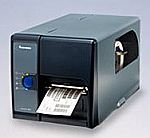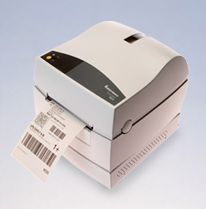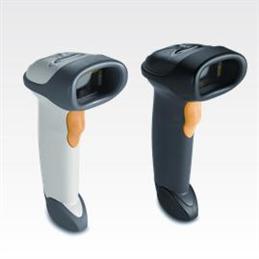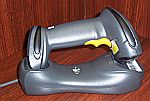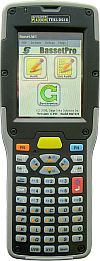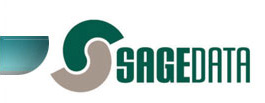Our Objectives
In this section we will try and walk you through the process of deciding the best printing solution for your application. There is only so much that we can do here on the web, so please feel free to contact SageData directly. One of our "barcode experts" will be happy to walk through the process with you.
Preprinted, or Print Your Own
A frequent opening remark from a potential client runs along the lines of "we want to install a barcode system, so the first thing we need is a barcode printer". To quote a former Canadian prime minister, "a barcode printer if necessary, but not necessarily a barcode printer".
For many stores applications, and for most warehouse applications, where items are tracked by SKU, then demand printing is necessary, and demand printing necessarily means an in-house printing capability. But for many asset management applications, where items are tracked by a UIC (a unique identification code), preprinted labels can often be used.
Compared to other functions within computing generally, printing is often problematic. It involves lots of mechanics as well as the stock materials.
So our first piece of advice, is that if you can go with preprinted labels, then do so. And if your application involves item level tracking, for asset management or for tracking high-value items or for items which must be rigidly controlled or for file tracking or for confirming inspections, such as for firefighting equipment, extinguishers, and so forth, then preprinted labels are generally the better solution.
Printer and Materials
The next decision to be made is around print technology. The standard barcode labels used in most applications are produced using thermal transfer technology. The basic stock consists of a label material, which is usually polyester. The "ink"is provided on a ribbon and during the printing process this ribbon is held tightly against the substrate, and selectively heated. The heat causes the material from the ribbon to be deposited on the substrate to form the barcode or text that is required. This technology provides extremely sharp edges without the blurring that is visible on the high magnification for other print technologies. As such it provides the most accurate barcodes and therefore the highest read rate. This technology is particularly appropriate for asset tags, which are required to last for several years and which will be read repeatedly during that time.
It is of course possible to print barcodes onto paper labels, perhaps Avery stock, using a standard laser printer. Specialized software is best used to print these labels, particularly to ensure that the barcodes are to specification. The advantage of this method is economy -- no special equipment is required and the label stock is cheap. There is no special setup or maintenance procedure for the printer. There are two specific disadvantages. The first is that labels can generally only be produced by the sheet. So if there are 60 labels to a sheet, you always get 60 identical labels, whether you want three or 13 or 58. The second disadvantage is durability. Paper labels will not last as long as polyester stock, though, depending on your application, this may not be a material issue. (No pun intended)
For more detailed information, please contact SageData directly, either by phone or click here to access our (no charge) Technical Help line.
In the meantime, feel free to examine two of our printing solutions in the next sections...
SageData Serializer
This piece of software was originally developed by SageData for a specific client. It provides a powerful if simple solution, and often enables new clients to take their first step into barcoding quickly, easily and economically.
Software enables you to add a barcode symbol to any existing documentation. You can add a fixed number, or a series of numbers. The software will automatically increment so that you can uniquely identify any given document. A simple barcode reader can be connected to your desktop computer to identify a given document, either as it returns to a single station, or as it passes through several steps in a process. The software is extremely easy to use, and a demonstration version can be downloaded so that you can experiment and determine if this will be a useful tool for your application. The software can be used for 30 days at no charge. Call SageData if you wish to have help in applying this software to your specific application. click SageData Serializer bar code printing software.
LAPIS - Label Printing Solutions
LAPIS is a flexible label printing solution that allows for mobile, custom and on-demand label printing. You define the size of label layout, using up to nine text and/or barcode blocks. The LAPIS system has everything you need to get started, including a Workabout handheld computer, handheld software, a comprehensive user manual, and a serial or parallel link for your printer.
![]() LAPIS Features
LAPIS Features
![]() LAPIS Benefits
LAPIS Benefits
![]() LAPIS Clients
LAPIS Clients
SageData is based in Ottawa, Ontario, Canada.
For further information, please contact us...
Send email to "info@sagedata.com"
Contact us by phone...
within Ottawa, dial (613) 225-4404
outside Ottawa, dial (888) 838-1067
© SageData . Ottawa . Ontario . Canada









